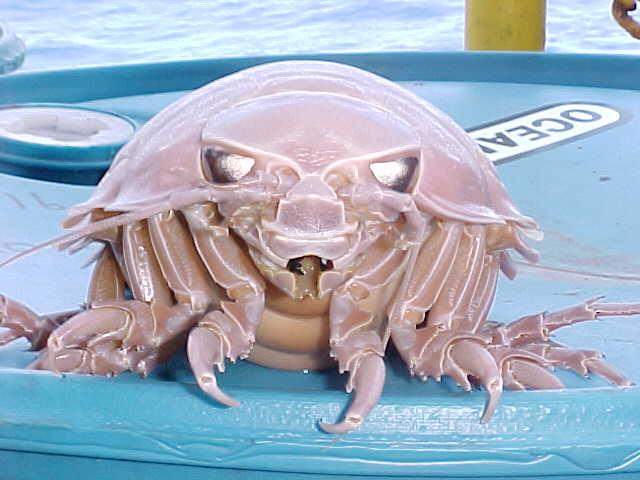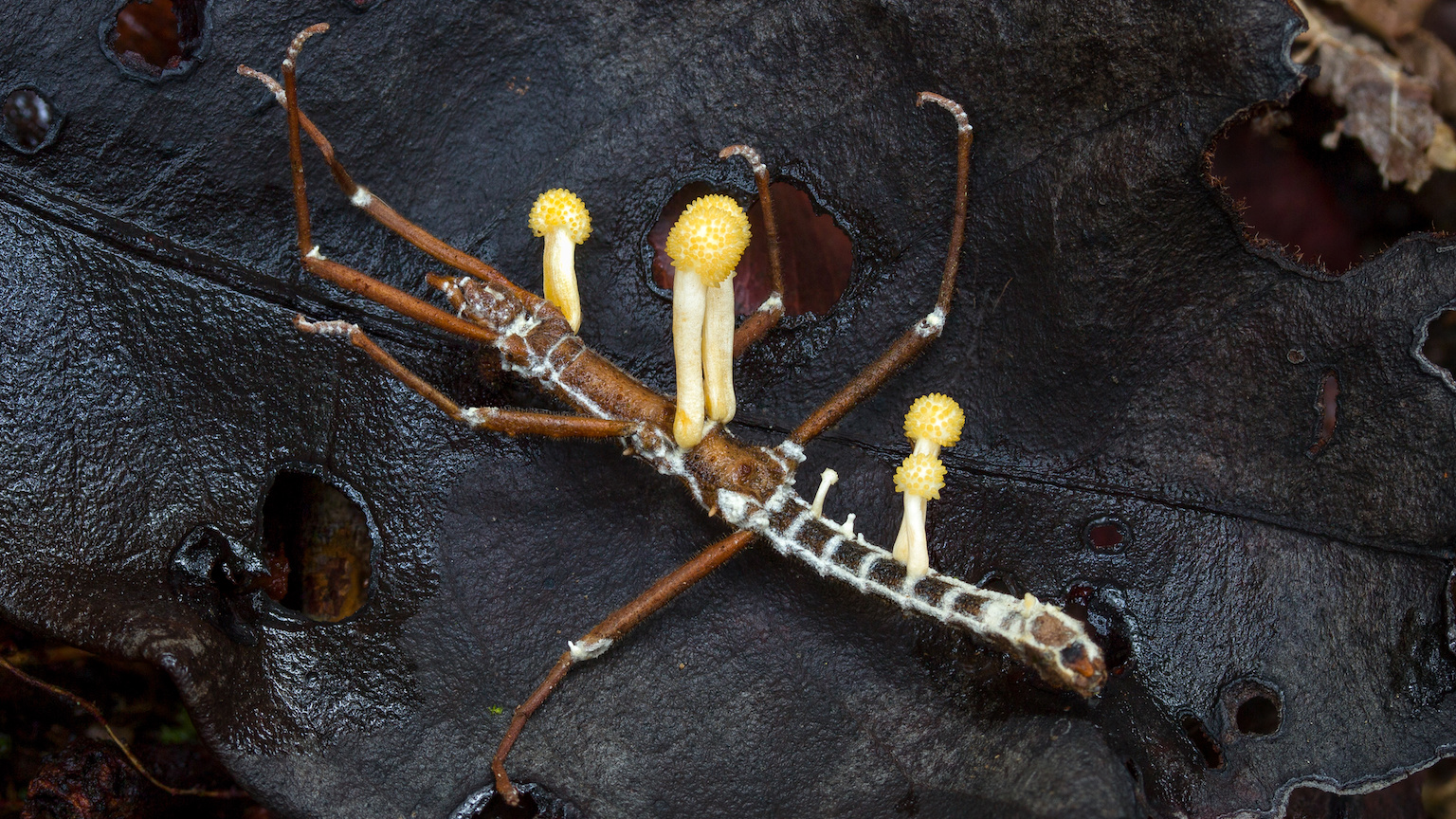Introduction
Despite being the most mysterious domain on the planet Earth the deep ocean remains the least studied territory on Earth. The deep aquatic world exists deep under the surface as a dark habitat with maximum pressure levels where unusual creatures survive in the Earth’s toughest environment. The deep ocean is populated by harmless creatures but also includes lethal predators that use their venomous nature to hunt their prey and terrifying demise awaiting objects or animals descending to the abyss.
These deadly creatures show that living in deep ocean waters provides as much danger as the wonder of the environment. The deep dark parts of the ocean contain ten deadly organisms which I will outline below.
10. Giant Squid (Architeuthis dux)
Depth: Up to 3,280 feet (1,000 meters)
Size: These creatures measure 43 feet (13 meters) in length at their maximum dimension.
Table of Contents
Why It’s Dangerous:
- The creature has large tentacles equipped with sharp suckers and hooks that enable it to grasp prey.
- This deep-sea predator stands as one of the greatest predators because it can successfully hunt whales.
- During hunting this creature displays both prime speed and intense aggressiveness.
Fun Fact:
Giant squids possess the biggest eyes which exist in animals with a diameter exceeding 10 inches (25 centimeters) and matching the size of a common dinner plate.

9. Deep-sea dragonfish (Stomiidae family)
Depth: Up to 5,000 feet (1,500 meters)
Size: 6–16 inches (15–40 cm) long
Why It’s Dangerous:
- With needle teeth and an organ that extends its mouth, the dragonfish can consume prey measuring larger than itself.
- The deep sea predator uses natural light emissions to attract its prey which ends up as tasty mouthfuls.
- One of the most aggressive ambush predators in the deep sea.
Fun Fact:
A strong hunting capability exists in the dragonfish due to its photophore organs through which it creates light in total darkness.

8. Deep-Sea Fangtooth (Anoplogaster cornuta)
Depth: Up to 16,400 feet (5,000 meters)
This species reaches a maximum body length of 6 inches (15 cm) respectively.
Why It’s Dangerous:
- Such fish possess the greatest teeth proportion to body size among fish species.
- The animal requires extra spaces inside its head to properly hold its giant fangs.
- The fangtooth fish can sever flesh fast because it is an aggressive hunter in deep waters.
Fun Fact:
Fangs of the fangtooth fish do not threaten humans because it live much deeper than in underwater exploration regions.

7. Pacific Viperfish (Chauliodus macouni)
Depth: Up to 13,000 feet (4,000 meters)
This fish has a normal skull structure with space for its fangs which can grow up to 12 inches (30 cm).
Why It’s Dangerous:
- Its teeth extend further back from its head to its skull.
- The creature uses lighting organs to charm its prey before delivering its incredible speed strike.
- Trusted studies show this fish can swallow prey the same size as it is.
Fun Fact:
The Pacific viperfish stays ready to prey as a deep-sea expert because it can survive many months without eating.

6. Frilled Shark (Chlamydoselachus anguineus)
Depth: Up to 5,000 feet (1,500 meters)
This shark can grow to 2 meters in length with its entire body.
Why It’s Dangerous:
- This animal shows a snake-like body plus a hazardous frilled mouth with 300 pointed teeth.
- It attacks prey with sudden movements just like a snake strikes.
- This creature joined Earth around the same time as dinosaurs without major evolutionary changes.
Fun Fact:
This shark jaw flexibility lets the frilled shark swallow creatures larger than itself.

5. Black Swallower (Chiasmodon niger)
Depth: Up to 9,000 feet (2,700 meters)
The creature has a total length of no more than 10 inches.
Why It’s Dangerous:
- Its elastic stomach allows the fish to swallow larger targets than its body size.
- This species can devour food items that are ten times heavier than itself.
- The animal eats large amounts until its stomach splits apart.
Fun Fact:
When the black swallower eats large amounts of food its stomach expands and stretches to accept the meals.

4. Goblin Shark (Mitsukurina owstoni)
Depth: Up to 4,300 feet (1,300 meters)
The creature measures around 3.6 meters long but cannot exceed it.
Why It’s Dangerous:
- Its powerful chewing apparatus extends quickly to seize prey within a single millisecond.
- Due to its sharp teeth the animal effortlessly slices through fish and squid prey.
- Though it travels at low speed its jaw can snap with lightning speed like no other living creature.
Fun Fact:
The goblin shark holds this title because science describes its unique features such as a pointed nose and pinkish body.

3. Giant Isopod (Bathynomus giganteus)
Depth: Up to 8,500 feet (2,600 meters)
The animal measures between 20 inches and 50 cm in length.
Why It’s Dangerous:
- A deep-sea scavenger that feeds on dead animals, sometimes even whale carcasses.
- The animal has strong claws built to split through tissue.
- The animal skips many feasting opportunities before gulping down whatever food it locates.
Fun Fact:
Because giant isopods belong to the same crustacean group as pill bugs they hold the record for the largest size in their species.

2. Deep-sea anglerfish (Melanocetus johnsonii)
Depth: Up to 6,600 feet (2,000 meters)
It measures up to 20 centimeters in length.
Why It’s Dangerous:
- On its head, it displays light to seize prey before closing its strong jaw.
- Its jaws curve in toward its throat which traps prey forever.
- The specimen can swallow targets greater than its size through its distensible stomach capacity.
Fun Fact:
The female anglerfish develops to be larger than the male and completely integrates him into her body when he mates.

1. The Zombie Worm (Osedax spp.)
Depth: Up to 13,000 feet (4,000 meters)
Its body remains under 3 inches (7.6 centimeters) in length.
Why It’s Dangerous:
- The creature digests whale bones through an acid-based digestive system.
- Its internal bacteria break down meat because it lacks an oral and digestive system.
- The creature needs just three months to turn a whale’s body into nothing.
Fun Fact:
The feed habits of zombie worms include bone consumption plus infected tunneling that transforms whale death zones into burial spheres.

conclusion
There are numerous lethal and frightful species in the deep ocean that science has yet to fully investigate. The ocean is one of the most deadly and enigmatic environments on Earth, as evidenced by the enormous squid, zombie worms, and huge anglerfish.
Top 10 Lists of the people, things, places, most expensive, animals, most popular, luxury and high rankings of world. World's Top Insider focuses on the top ten lists of best, greatest and top rankings in the world.


